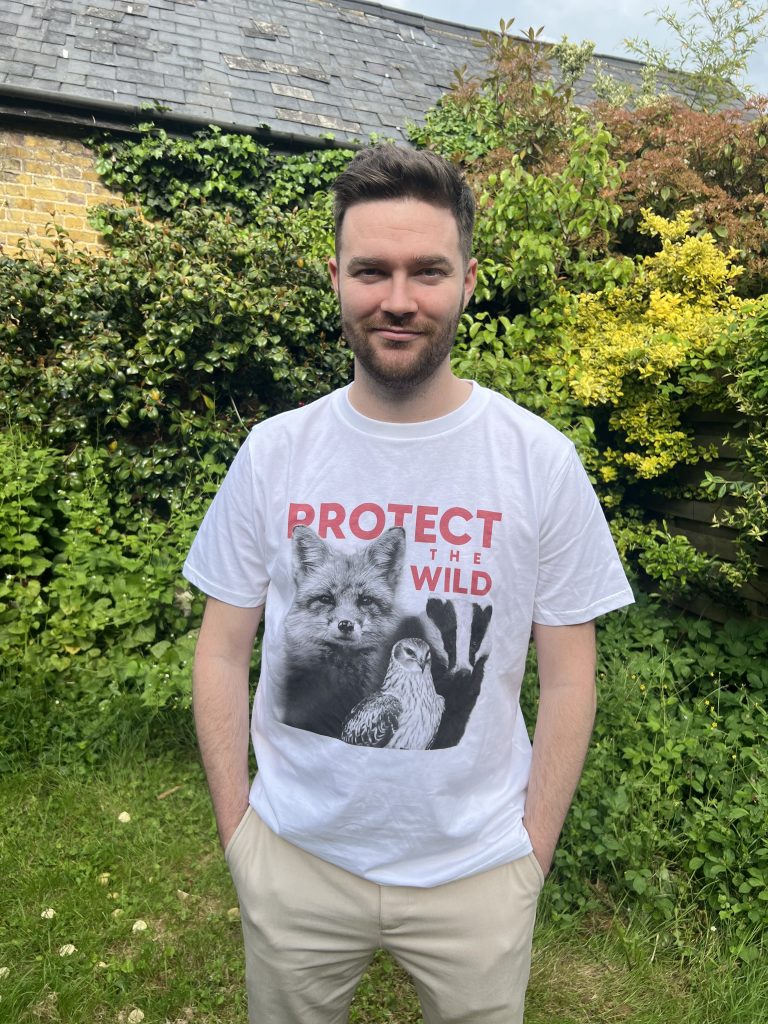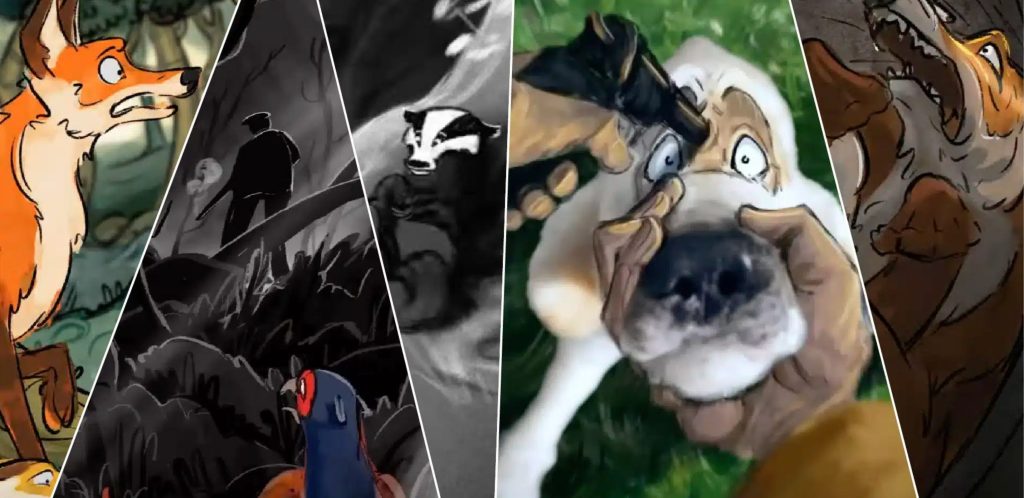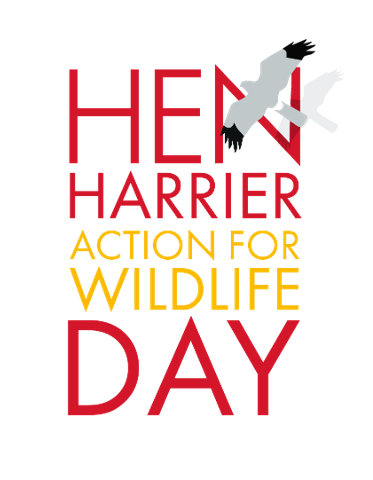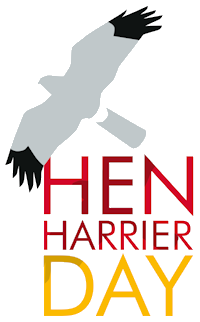
We recently caught up with Rob Pownall, the young founder of Protect the Wild, an organisation that campaigns against the hunting of mammals, including fox-hunting, badger culls and raptor persecution.
Although a young organisation, Protect the Wild has a strong online presence, produces hard-hitting and effective animations and supports local activists on the ground with equipment such as drones, radios and body cameras.
Protect the Wild is one of the sponsors of the Action for Wildlife Day event at Carsington Water in August, and Rob will be speaking about the organisation’s mission and work.
"You only need a few people to make a big difference"
HHA: Tell us more about Protect the Wild, Rob
The core focus of the organisation is to protect all British wildlife, but our specific goals are to end hunting, end shooting and stop the badger cull. And I can see each of these objectives being within reach in the next few years.
We produce a comprehensive Impact Report each year, and we’ve done that since 2020, when we set up as a not-for-profit organisation. We’ve really accelerated our campaigning, and our successes, since then. We’re still a small and lean team, with just seven employees, and only four are full-time. I really believe in the principle that you only need a few people to make a big difference, and I think a lot of organisations have far too many staff.
We want to keep Protect the Wild lean – I’ve come to realise that the effectiveness of a campaigning organisation is not directly correlated with the income that they are bringing in. A lot of our most effective work comes from localised pressure and campaigning, working with volunteers in the area. We are becoming more strategic in how we exert pressure in our campaigns.
Our mission statement is ‘Empowering People to Protect British Wildlife’ and we want to be an organisation that gives people the tools, the equipment, the funds and expertise, and the training to become activists themselves. We want to become facilitators, helping local groups to protect wildlife in their area and advocating for wildlife.
HHA: Why did you change your name from Keep the Ban?
We wanted to cover a lot more issues beyond just fox-hunting. We’ve done several investigations now into the badger cull and shooting estates and we’ve uncovered some really shocking footage relating to these areas. We realised we were no longer a single-issue campaigning group, and we wanted to move to a more all-encompassing position, acting to protect all wildlife. Protect the Wild encapsulates that broader focus.
HHA: How did you come to found the organisation, Rob?
I had just turned 16, and I saw a newspaper article suggesting that the Conservative government of the time were trying to re-legalise fox-hunting. I signed a petition to keep the ban, and started to develop a Facebook page to raise awareness of the issue. In the first week it attracted 10,000 followers, and I realised that there were a lot of like-minded people out there.
In the first few years of building that Keep the Ban group, I think we did well in raising awareness but I am not sure that we achieved very much in terms of legislative change or helping activists. I was a student at the time and working very much on my own on this. And that’s why more recently, as Protect the Wild, we have expanded our remit and worked hard to facilitate more action on the ground, helping local activists.
"We can talk to them directly to bring about a real change for wildlife"
HHA: Your reach on social media is remarkable. How do you achieve this?
We always make sure that we use natural, conversational language in our posts on social media. We want every message to feel personal, authentic and relatable, a message from a friend, in effect.
And we make sure that every post is tailored to the platform for that channel, understanding the algorithm and adapting to it. And it’s not just social media. We’ve put a lot of effort over the last two years into building our own mailing list so that we can communicate directly with our supporters.
And it works, it’s effective. We now have over 80,000 on our mailing list, and we can talk to them directly to bring about real change for wildlife. We really want to keep up the momentum.

"The animations we have produced are now the foundation of all our recent campaigning successes. They are a real gamechanger"
HHA: You use a lot of animations in your campaigning. Why is that?
I can’t stress too much just how transformative that has been. The animations we have produced are now the foundation of all our recent campaigning successes. They are a real gamechanger.
The first one we produced, A Trail of Lies, with narration by Chris Packham, was very successful, hitting around half a million views across Twitter and Facebook. It’s a great tactic to improve accessibility and deepen people’s understanding of the issues. It was also particularly important for Protect the Wild, because we had a lot of graphic, difficult-to-watch content from our investigations, but we couldn’t get it published on social media platforms because it was too gruesome, and got blocked.
But you can still tell these horrific stories, these poignant, sad stories of cruelty and brutality, as an animation. And it broadens the reach. We can still get the facts across to a wide audience without falling foul of social media algorithms.
And people are more like to watch it, to understand the message, to share it, and to act as a result. Signing petitions, donating, joining our mailing list – the majority of these actions come as a result of our animations. The hound shooting animation has now reached about 4 million views! And we are close to 25 million views in the last year alone from our animations.
We always try to give viewers a specific call to action that they can take after watching the animation, for example signing the petition for a proper ban on hunting. We’ve got over 120,000 signatures on that petition.

We use a lot of well-known celebrities to contribute the voiceovers. We’ve had Chris Packham and Dr Amir Khan narrating, and Sam Carter from the British metal band Architects, which helps us reach a different, younger audience, people who would otherwise not be aware of wildlife persecution issues.
HHA: What have you been most pleased to achieve over the last 12 months?
There are two main projects that have been really successful and have a lot of potential for the future. Developing our Support Network, which funds equipment for groups working to protect wildlife, including body cameras, drones, radios, night vision optics, trail cams and more. It is a monthly pot of money that is built from small donations that directly help the brilliant people working on the front line to protect wildlife.
But we don’t just want to help financially. We want to get to a point where we are doing training days, so that local groups can leverage social media better, write more effective press releases, and fundraise for themselves. We want to help them build their own strong local following with good fundraising tools at their disposal.
And the other project I am really proud of is the Protectors of the Wild, led by my colleague Charlie Moores. It’s a free resource to help activists understand the law and their rights on a range of issues around wildlife crime, while eliminating a lot of jargon and legalese.
And right now we are working to develop a directory – a mini website – of businesses in the UK that are linked to hunting, shooting or badger culls, to help people who care about wildlife make more informed choices about the businesses they use.
"I think we've reached a point where we can be braver and more abolitionist in our campaigning"

